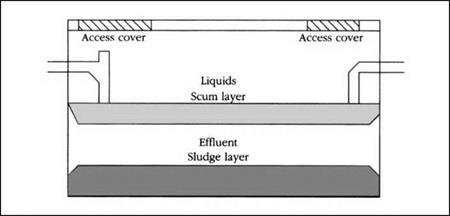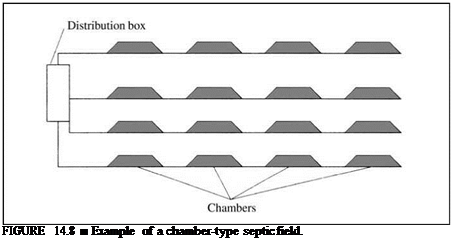CHAMBER SYSTEMS
Chamber septic systems are used most often when the perk rate on ground is low. Soil with a rapid absorption rate can support a standard, pipe-and-gravel septic system. Clay and other types of soil may not. When bedrock is close to the ground, surface chambers are often used.
![]()
![]()
![]()

What is a chamber system? A chamber system is installed very much like a pipe-and-gravel system, except for the use of chambers. The chambers might be made of concrete or plastic. Concrete chambers are naturally more expensive to install. Plastic chambers are shipped in halves and put together in the field.
Since plastic is a very durable material, and it’s relatively cheap, plastic chambers are more popular than concrete chambers.
When a chamber system is called for, there are typically many chambers involved. These chambers are installed in the leach field, between sections of pipe. As effluent is released from a septic tank, it is sent into the chambers. The chambers collect and hold the effluent for a period of time. Gradually, the liquid is released into the leach field and absorbed by the earth. The primary role of the chambers is to retard the distribution rate of the effluent.
Building a chamber system allows you to take advantage of land that would not be buildable with a standard pipe-and-gravel system. Based on this, chamber systems are good. However, when you look at the price tag of a chamber system, you may need a few moments to catch your breath. I’ve seen a number of quotes for these systems that pushed the $12,000 mark. This is more than double what the typical cost for a gravel-and-pipe system in my region. But, if you don’t have any choice, what are you going to do?
![]()
![]() A chamber system is simple enough in its design. Liquid leaves a septic tank and enters the first chamber. As more liquid is released from the septic tank, it is transferred into additional chambers that are farther downstream. This process continues with the chambers releasing a pre-determined amount of liquid into the soil as time goes on. The process allows more time for bacterial action to attack raw sewage, and it controls the flow of liquid into the ground.
A chamber system is simple enough in its design. Liquid leaves a septic tank and enters the first chamber. As more liquid is released from the septic tank, it is transferred into additional chambers that are farther downstream. This process continues with the chambers releasing a pre-determined amount of liquid into the soil as time goes on. The process allows more time for bacterial action to attack raw sewage, and it controls the flow of liquid into the ground.
 If a perforated-pipe system was used in ground where a chamber system is recommended, the result could be a flooded leach field. This might create health risks.
If a perforated-pipe system was used in ground where a chamber system is recommended, the result could be a flooded leach field. This might create health risks.
 |
It would most likely produce unpleasant odors, and it might even shorten the life of the septic field.
Chambers are installed between sections of pipe within the drain field. The chambers are then covered with soil. The finished system is not visible above ground. All of the action takes place below grade. The only real downside to a chamber system is the cost.






Leave a reply